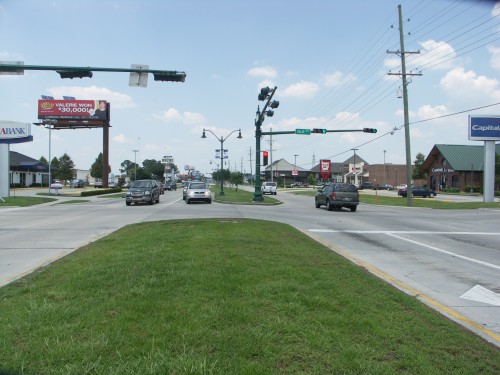June lease sale anticipated; producers contend a little not enough
May 23, 2012
Oil and gas investment encouraged
May 23, 2012A banking location report, based on information gathered by a national financial data provider, did not accurately portray raw data according to one of the study’s authors.
In a telephone interview with the Tri-Parish Times, SNL Financial (formerly S&L Securities) Senior Analyst David Hayes said research reported in national publications included implications of economic bias existing on the part of banks. A suggestion he identified as misleading.
The comparative study by the Charlottesville, Va.-based data provider involved 5,626 bank branches in similar markets and their activity between 2006 and 2012.
Raw data gathered by SNL tracked real estate activity for commercial banks and was posted according to annual net gains and losses of locations.
In areas where annual median incomes exceeded $100,000 bank presence increased 8.4 percent.
Areas with median annual incomes ranging from $50,000 and $100,000 saw a net increase in bank openings of 5.3 percent.
A less than 1 percent net increase in the number of available banks was listed for areas with a median income range between $25,000 and $50,000.
At the same time, areas where residents were reported as having net incomes of less than $25,000 annually, a 1.2 percent decline was listed in the number of banks.
Hayes said on the surface data suggests that banks are leaving lower income neighborhoods in favor of higher income customers. The Los Angeles Times quoted California Reinvestment Coalition Executive Director Alan Fisher as having said “…regular folks who may not have a lot of money are being pushed methodically out of mainstream banking.”
Hayes said economic exclusion is not the case based on his data, particularly in regard to open banking locations. He added that the main reason banks post more openings in new retail locations is because they already have existing branches in older areas.
In Houma, observers noted that on a little more than a half-mile stretch along St. Charles Street, between La. Highway 311 and just beyond Valhi Boulevard, a combination of eight national and regional bank branches have opened shop during the time period SNL researched. The surface suggestion is that banks are flocking to newer and more affluent areas to compete for high dollar customers.
However, at the present time, within the same distance along Grand Caillou Road on Houma’s east side, between Tunnel Boulevard and Prospect Street, which is generally considered home to mostly lower income residents, there are also eight regional and national banks. Even more are present just outside the half-mile measurement in the older part of this metropolitan area.
“I would think banks just go where there is heavy traffic,” Re/MAX Realtor Cynthia Pellegrin said. “I’ve wondered [why there are so many banks in close proximity to one another] myself. St. Charles has become a main thoroughfare just like Grand Caillou Road and MLK Boulevard. There are banks along all those areas. ”
“What our research showed was not a matter of relocating,” Hayes said. ”It was more that they stopped building new branches in low income areas.”
Hayes said that the loss in sub-$25,000 markets is small when considering overall banking activity. “As far as it being a mass exodus I don’t think that is accurate,” he said.
Researchers noted that most of the new bank branch openings took place in newly developed suburban areas. Hayes also explained that most of the closures in older, and generally lower income areas, came as the result of bank mergers.
“Old National Bank said a lot of their closures were more incidental due to the fact that they had some branches literally on the same street as the company they acquired, Hayes said. “It was really more or less right sizing the company.”
According to SNL data, since 2007, Woodforest Financial Group Inc., which has a branch inside Wal-Mart on Grand Caillou Road, opened the largest number of branches in markets with median household incomes below $50,000, netting 333 additional branches during the past five years. Branches in lower- and moderate-income markets accounted for 58.5 percent of Woodforest’s total branches.
Each of the large and moderate bank branches represented in Houma’s more affluent areas also has branches in the city’s more modest income zones.
“If people believe banks are leaving [lower income areas] in droves, our data does not show that,” Hayes said.
Pellegrin said businesses tend to follow populations when it comes to commercial real estate. “Those are both heavily populated areas,” she said.
Telephone calls to banks that line the identified sections of St. Charles Street and Grand Caillou Road, seeking information on branch location selection, were not returned.
Busy locations like St. Charles Street are prime locations for banks.











